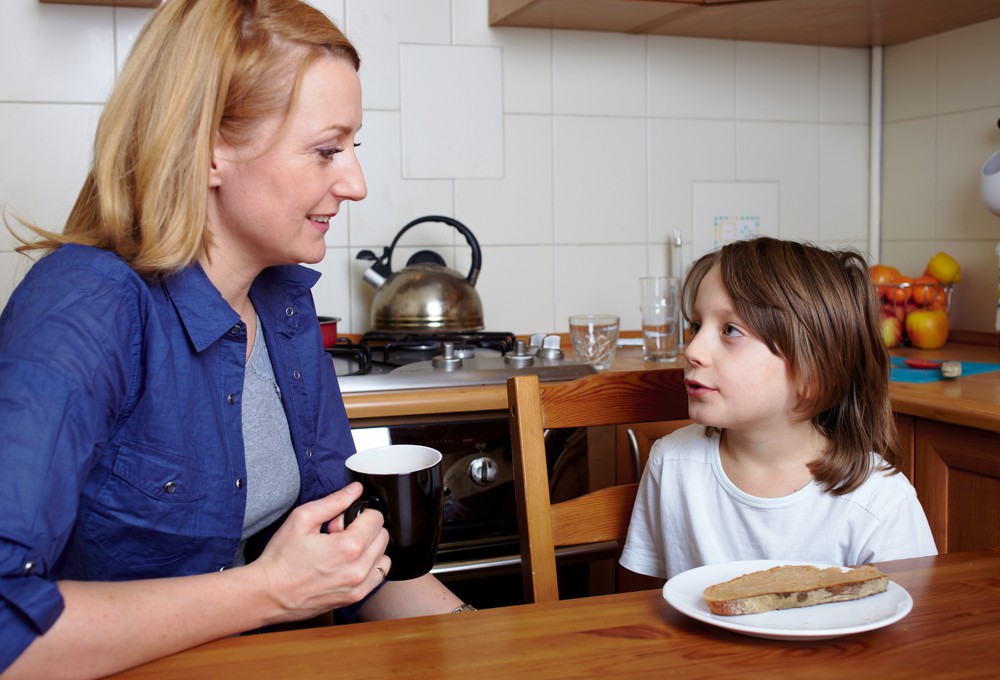Talk to your kids about their donor origins early
Raising two kids in a lesbian family, I knew we’d start talking about our unique family structure early in my children’s lives. But I wasn’t sure when to broach the topic of my kids’ genetic second half: their anonymous donor.
So when my oldest son was two years old and my youngest was an infant, I attended a panel discussion called “Talking to Your Kids About Their Donor Origins” sponsored by Our Family Coalition.
There I heard Alice Ruby of The Sperm Bank of California—pioneers of the Identity-Release donor model—say the words that convinced me to start the donor conversation right away: “You don’t want your children to remember the moment they were shocked to find out about their donor.”
According to Jean Benward, a licensed social worker, beginning these origin conversations as early as toddlerhood benefits both child and parent; it normalizes the topic for the child, and “it gives parents a chance to begin to get comfortable with the topic. You have time to practice your conversations with your child. If you want to change how you talk about it, you get another chance.”
How, exactly, do you talk to your child about the donor? You’ll find some helpful tips and resources here from The Sperm Bank of California.
But the donor conversation is not a onetime conversation. Children will want to revisit the story of their origins throughout their lives, just as they do with all big topics, such as love and death. As they move through new developmental stages, their curiosity will grow, their questions becoming more specific.
My children have followed this pattern, surprising me with the depth and vulnerability reflected in their questions. Twice our conversations have revealed potentially painful misunderstandings. Once, my son asked, “Did the boy who helped make me not want me?” Another time I learned that my children believed I had met their donor, and they thought it was unfair that I had met the donor but they hadn’t.
These moments further emphasized the importance of not only starting the conversation early but also keeping it alive throughout children’s lives. If I hadn’t had the chance to address their concerns, those misunderstandings could have festered in their minds for years.
According to the COLAGE and Donor Insemination Guide, some parents fear the donor conversation. They might feel threatened by children’s questions, afraid that “discussing the donor will lead to their children to wanting to meet their donor and form a relationship.” Other parents might read their children’s questions as “a sign that their children are unhappy with their family.” But people born through donor insemination “stress that their curiosity about their donor does not mean they are displeased with their families.” Most often, their desire to know more “is driven by a motivation to discover more about their genetic origins.”
When parents acknowledge their own fears, they are more likely to create an open dialogue that feels good to parent and child alike. As one parent describes it, “I was a bit afraid of questions—worried that curiosity about the donor would indicate a perceived lack in their lives and defensive about the adequacy of a single-parent family.” Eventually, she discovered, “When I affirm the legitimacy of their wonderings and longings, and am nondefensive, it turns out not to be a big deal.”
In my experience, these conversations have been better than “no big deal.” They have been intimate, tender, honest exchanges that enrich our understanding of each other and reiterate the love and hope that brought my kids into my life.
Photo credit: Shutterstock.com
Cheryl Dumesnil, ESME’s LGBTQ Resource Guide, is an author, educator, writing coach, all-around do-gooder, and one of two moms separately coparenting two amazing boys. You can follow her on Twitter at @cheryladumesnil.
Please feel free to contact us with any comments or questions.









